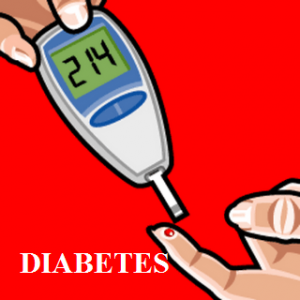Category: Diabetes
Symptoms of diabetes in women
Just like men, even women can develop diabetes. Additionally, they can also suffer from diabetes that is specific to women. For example, only pregnant women can suffer from gestational diabetes. The symptoms of diabetes in women are similar and can appear at various stages. When you are aware of these symptoms, it will help in diagnoses of the problem and prevent serious complications. Some of the symptoms of diabetes in women include:
Fatigue
Diabetic ketoacidosis in women can result to increased levels of fatigue. Fatigue caused due to diabetes is more than just feeling tired. This type of fatigue will make it difficult for you to keep your eyes open. You will feel weak and make activity and movement difficult.
Frequent Urination
When an excessive level of glucose is released in the urine, it can cause osmotic dieresis in which chloride, potassium and sodium are also excreted in high quantities. When women urinate, higher than normal level of water accompany these electrolytes which can lead to dehydration.
Diabetes is known to affect the functioning of kidney which can lead to frequent urination. Unusual urine frequency is also an indicator of high glucose levels in the bloodstream. Increase in glucose levels can occur if the insulin level is insufficient to break down glucose for absorption.
Excessive Thirst
Excessive urination can lead to body dehydration which leads to frequent thirst. Excessive thirst caused is different from normal thirst because you feel that your thirst is unquenchable. You may feel parched even after you drink water and other beverages.
Weight Loss
Some women who suffer from Type 1 diabetes may not be able to breakdown food because enough insulin is not produced by their body. When insulin levels are low, sugar is not absorbed by the body which can result in weight loss.
Weight Gain during Pregnancy
Any abnormal weight gain during pregnancy is an indication that woman is suffering from gestational diabetes. When a woman is pregnant, their body may need more insulin than what their body can produce. However, this problem can be discovered only in the second or third trimester of their pregnancy.
Problem in the Eye
When the level of unabsorbed glucose increases in the bloodstream, it can affect the functioning of the eye. Blurred vision is one of the symptoms of diabetes in women. Studies have also shown that risk of legal blindness can increase by 2500 percent in women who suffer from diabetes.
Decreased sensation in the arms and legs
`One of the common symptoms of diabetes is decreased sensation in the arms and legs. Some women could also suffer from diabetic neuropathy or acute pain in their feet and arms. If diabetes is not controlled it can lead to pain in the nerves.
Impaired Wound Healing
Decreased sensation in the arms and legs can lead to the tendency of overlooking the wounds. Some women step on pointed and sharp objects which can lead to ulcers and wounds. Since blood circulation is less efficient in people who suffer from diabetes, wounds may take time to heal. If you notice that your wounds are taking time to heal, it is sign that you are suffering from diabetes.
Infections
Diabetes can affect the immune system which can increase the chances of bladder and yeast infection. High glucose level in the blood provides an environment that facilitates yeast growth which can increase the risk of vaginal yeast infection.
Can you suffer from diabetes even if no one in your family suffers from diabetes?
 There are many people who believe that they will not suffer from diabetes if no one in their family has diabetes. This belief of people is wrong as you can have diabetes even if your family members don’t have diabetes. The genes of a person are not the right parameter that people should use to check if they will get diabetes or not. These genes can only increase or decreases the chances of diabetes. For instance, if your parents are suffering from diabetes, then you are at a higher risk of suffering from this problem. However, this does not mean that if your parents don’t have diabetes you will not have this problem.
There are many people who believe that they will not suffer from diabetes if no one in their family has diabetes. This belief of people is wrong as you can have diabetes even if your family members don’t have diabetes. The genes of a person are not the right parameter that people should use to check if they will get diabetes or not. These genes can only increase or decreases the chances of diabetes. For instance, if your parents are suffering from diabetes, then you are at a higher risk of suffering from this problem. However, this does not mean that if your parents don’t have diabetes you will not have this problem.
Apart from genetics that there are several other factors that can increase the risk of diabetes. For instance, the environmental factors like lack of physical activity and unhealthy diet can increase the risk of diabetes. When a person eats unhealthy food and does not exercise regularly, they are more likely to suffer from type 2 diabetes and obesity. There have been several instances in the past where parents of a person suffer from diabetes and their children don’t suffer from diabetes because they eat healthy food.
Environmental factors have little role to play in lives of people who suffer from type 1 diabetes. However, exposure to certain viruses and toxins can increase the risk of type 1 diabetes. Therefore, it is important that you understand the factors that have caused diabetes and take steps to correct the problem.
